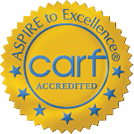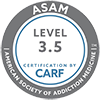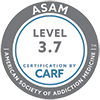Although it’s relatively common to see celebrities and big names in the entertainment industry check in to rehabilitation centers around the country, is Hollywood the only industry with a high rate of substance abuse disorders?
It’s a good question, and the answer is no. Some industries are especially rife with substance use triggers: high stress, high productivity demands, and a culture of substance use. We’ll look at which industries have been shown to have high rates of substance abuse and why.
The Biggest Industries for Substance Abuse
The most recent research on this topic dates to 2015, when the Substance Abuse and Mental Health Services Administration (SAMHSA) released a short report on who was abusing drugs and to what degree.
The industries that employed the most people with active substance abuse issues were:
- Mining – Mining is a physically demanding, dangerous, and often isolated industry. Miners usually work in high-intensity two-week shifts in areas around the county that have little to no population in the work vicinity. It’s stressful, psychologically isolating, and physically taxing.
- Construction – Although not necessarily stressful or isolating, construction work comes with physical labor—and therefore, in many cases, physical pain. The work is also often repetitive and can become monotonous. This monotony and propensity for physical pain may be the two contributing factors to substance abuse in the field.
- Hospitality – The driving force of this industry’s addiction issue seems to stem from the stress level associated with hospitality roles. Frequent verbal abuse from customers and superiors, along with long hours and relatively easy access to both legal and illegal substances, creates fertile ground for substance abuse.
- Food and Service – Substance abuse forms the cultural fabric of food and service industries. The environment in most cases is chock full of recreational drugs, alcohol, anxiety, and the pressure to perform well, work hard—and later play harder.
Industries With Low Substance Abuse Rates
On the up side, some industries can claim relatively low addiction rates. The three industries that seem the least conducive to creating and fueling substance dependence are not stress-free; however, the work culture promotes healthier responses to stress.
- Education – Teachers and other professionals that work in education traditionally suffer low rates of addiction.
- Health Care and Social Services – Now more than ever, the U.S. is seeing shortages in health care personnel, hiking up the stress level and responsibility of doctors, nurses, and other types of medical workers. And sometimes doctors and nurses fall prey to prescription drug abuse. Even so, substance abuse in this industry still remains low.
- Public Administration – Although the addiction rates are low in this sector of the economy, they increase with lowered supervision, lowered opportunities for autonomy on the job, and lowered incentives or un-motiving cultures within public administration.
How to Spot Substance Abuse Symptoms on the Job
Tell-tale signs of an addiction at play include the following observable symptoms in workers and professionals across industries:
- Frequently calling out or missing work (also known as absenteeism) – Missing work doesn’t always indicate addiction (it could indicate a mental health or family issue, for example), but absenteeism is one symptom of addiction.
- High bounce rates – Also called staff turnover, high bounce rates between jobs sometimes indicate that a struggle with addiction is causing a person to fail to keep their job for a sustained amount of time.
- Negative changes in attitude, personality or motivation – This might manifest subtly as a lowered morale or darker outlook on life.
- An increase in on-site accidents and theft – Because drugs and alcohol often dim the senses and reaction times, many workers who abuse substances have been known to injure themselves or others, especially when heavy machinery is involved.
No Matter Where You Work, Help is Available
These symptoms don’t always mean that a substance abuse disorder is present. But if you think that you, someone you love, or someone you work with is struggling with addiction, reach out to St. Gregory Recovery Center today. Each person we work with is capable of completing treatment and getting back to work with renewed energy and coping tools.
Don’t hesitate to call us today with questions or concerns.







